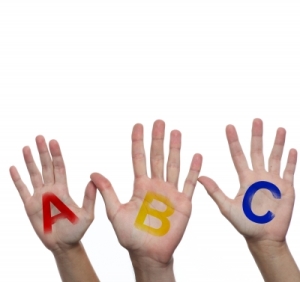Yes, I’m still on holidays. By the time this post is published, I will have celebrated two family birthdays and engaged in some serious R&R, Canadian-style. Soon, I will be back at home and ready to get blogging again for real (just when everybody else turns off their computers for the summer and heads off to the beach – what’s wrong with this picture?).
Anyway, this week’s post looks at a video I did for Lourdes of AIB many moons ago (I’m guessing by the fleece sweater I’m wearing that it must have been filmed sometime around Christmas). In the video, I look at a number of common myths surrounding interpreter training. If you haven’t seen the video yet, then you might want to take 7:41 minutes of your time to do so.
Below, I am also including the original script that I wrote for the video. Anyone who is too busy to watch the video can skim the script for the main ideas. Readers interested in seeing how far an interpreter trainer can go off track when trying to improvise on a theme on the basis of written notes can compare the written and recorded versions of the speech. Also, students wanting to test their consecutive note-taking technique can try to take notes from the video, as it is pretty much in line with the kind of speech I would give in a consecutive class, in terms of length, structure and difficulty of the subject matter (although it might be lacking in figures).
Enjoy!
Top misconceptions about training to become an interpreter
1) ANYONE CAN BE AN INTERPRETER
Many believe you don’t need any training at all, you just have to speak a couple of languages to become an interpreter. This misconception possibly arises from the fact that when you watch a good interpreter in action, it all appears so effortless. This may lead the uninitiated to think that anyone can do it that easily.
This is absolutely FALSE. It’s like saying anyone who can use a thermometer can be a doctor, or owning a pair of skis will make you a ski jumper. While the thorough knowledge of languages is absolutely essential to becoming an interpreter, it is not enough in itself. The reason why it all looks so easy is because the interpreter has spent years training and practicing the skills required to do his or her job.
2) INTERPRETERS ARE BORN, NOT MADE
Here, the idea seems to be that some people are born with a “knack” for interpreting and others don’t. It is true that a certain number of “in-born” traits will make it easier for one to learn the skills required to become an interpreter. For instance, it helps to:
– be a good communicator
– have a quick and well-organised mind
– have the ability to concentrate and focus, especially in stressful situations
– have strong nerves
– have intellectual curiosity
– be adaptable to new situations
– be a people person (although not all interpreters are extroverts)
– be a team player
– show personal integrity
However, even having all of these things won’t automatically make you a “born interpreter”. In the ten years that I have been training interpreters, I have seen many a promising student show up on the first day with all of these traits, and still not make it as interpreters in the end. The fact is, if you don’t apply yourself and work hard to learn the specific skills related to interpreting, you will never make it.
Which brings me to myth number 3…
3) INTERPRETING CAN’T BE TAUGHT
This one is actually a bit mystifying for me, since most people seem to agree that pretty much every other profession requires training. You want to build a skyscraper? Go and study architecture. You want to run a multinational? Sign up for an MBA. You want to become an interpreter? Apply to a postgraduate interpreting course.
The idea here behind the myth that interpreting can’t be taught would appear to be that since the whole interpreting process all happens so quickly inside one’s head, there is no way to actually figure out what’s going on in there and then teach the techniques required. This is particularly the case for simultaneous translation, where observers see the interpreter listening, mentally analysing and translating the message, and speaking all at the same time.
I’m pleased to say that this belief is also FALSE:
Decades of theoretical research into interpreting have led to well-developed theories of interpretation which show that interpreting is not just an instinctive activity that can only be “learned by doing”. Hundreds of academic articles and dozens of books have been published on the subject. All this has led to a theoretical and practical understanding of just how the interpreting feat is accomplished – and this is what is taught to aspiring interpreters.
During an interpreter training course, the interpreting process is broken down into different phases and skill sets. Each is tackled separately first, and then brought together to create the final product. I liken the process to learning how to juggle. It’s a matter of first learning to throw the balls separately, and then gradually managing to keep them all up in the air. Inevitably, a lot of balls will end up on the floor as the learning takes place, but the end result will be students who are able to do all of these skills apparently “at once” and perform the act of interpreting.
The whole process of becoming an interpreter, far from being impossible to learn, is actually very long and painstaking, and students themselves often complain that one year is not enough (this is the usual length of a postgraduate degree in conference interpreting). This stands in stark contrast to the views of laypeople, who seem to think that no training at all is required, or indeed, even possible.
If you are going undertake training as an interpreter, you had better make sure that you are at the right place, where the job is going to be done right.
Which brings me to my fourth and final myth about interpreter training:
4) ALL INTERPRETING COURSES ARE CREATED EQUAL
This is simply not true. Just as I’m sure you would do a lot of research before applying to an executive MBA, I highly recommend prospective students research various interpreting schools before making their choice. They shouldn’t necessarily just pick the course closest to home, or the one at the university their friends plan to attend.
What to look out for? According to the AIIC (the International Association of Conference Interpreters), which has drafted a list of best practice for conference interpreting training programmes, a course should be at the postgraduate level, be at least one year long, be taught by conference interpreters, include an aptitude test, and teach both consecutive and simultaneous interpreting techniques.
The AIIC’s recommendations, as well as a number of other tips for prospective students of interpreting, can be found on the website of AIB, along with a lot of other useful information about the profession. AIB offers objective, useful information and debunks a lot of myths, including the four I have talked about today.


